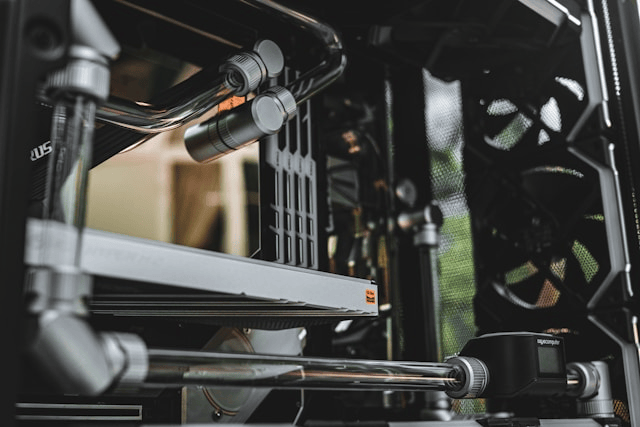Custom t-shirts are a staple in the fashion world. Whether for personal use, branding, or events, printed tees allow people to express themselves in unique ways. But behind every great design is the method used to print it. T-shirt printing is a diverse industry, with several techniques available for producing high-quality, durable prints. From traditional screen printing to newer technologies like Direct-to-Garment (DTG) and Direct-to-Film (DTF), each method has its advantages and challenges. If you’re looking to create custom t-shirts, understanding the differences between these methods is essential. In this article, we’ll break down the most popular printing techniques and explain when to use each one.
The Importance of Choosing the Right Printing Method
The printing method you choose for custom t-shirts impacts everything from the design quality to the cost and turnaround time. Whether you’re printing a few shirts for a special occasion or producing large batches for a business, selecting the right technique can make or break the product. Each method has its strengths, and some are better suited to particular types of designs, fabrics, or order quantities.
When considering a printing method, several factors should guide your decision-making:
- Design complexity: How intricate is the artwork? Does it use multiple colors or gradients?
- Order size: Are you printing a few shirts or a large batch?
- Fabric type: What material is the shirt made from, and does the printing method work well with it?
- Budget: How much are you willing to spend on printing?
With these factors in mind, let’s explore the most common printing methods.
Screen Printing: The Timeless Classic
Screen printing is one of the oldest and most widely used printing methods. It involves creating a stencil, or screen, for each color in the design. Ink is then pushed through the screen onto the t-shirt fabric. The process is repeated for each color in the design, layering the inks until the final print is complete.
One of the key advantages of screen printing is its durability. The ink used in screen printing adheres well to fabric, resulting in a print that can last for years without fading or cracking. This makes screen printing a great choice for high-quality, long-lasting designs. Additionally, screen printing is very cost-effective when used for large orders, as the setup costs are spread out over the number of shirts produced.
However, screen printing does have its limitations. It’s not the best choice for small orders or highly detailed designs. The process requires creating a separate screen for each color in the design, making it less efficient for designs with many colors or intricate details. Additionally, there are setup costs that can make it less affordable for small batches. This method works best for simple designs with fewer colors and large runs.
Direct-to-Garment (DTG) Printing: Precision and Flexibility
DTG printing is a more modern method that uses inkjet technology to print designs directly onto the fabric. The process works similarly to how a standard inkjet printer prints onto paper, but with specialized inks and machinery designed for fabric. DTG printing offers a high level of precision, making it ideal for intricate, multi-colored designs.
One of the biggest advantages of DTG printing is its ability to handle complex artwork, including gradients, fine details, and photographic images. Unlike screen printing, there’s no need for separate screens for each color, which makes DTG printing a more flexible option for small batches or one-off designs. Additionally, DTG printing doesn’t require the use of special materials, meaning it can be done on a wide variety of fabrics, including cotton, polyester, and blends.
However, DTG printing does have some downsides. The cost per unit is typically higher than screen printing, making it less cost-effective for large runs. It also requires more time to print individual shirts, which can slow down production for larger orders. While the prints produced are of excellent quality, the longevity of the print can vary depending on the fabric and ink used. This method works best for small orders, high-quality designs, and fabrics like cotton.
Heat Transfer Printing: Affordable and Versatile
Heat transfer printing is another popular method for creating custom t-shirts. It involves printing a design onto a special transfer paper and then using heat to transfer the design onto the fabric. This can be done with either a vinyl cutter or inkjet printer, depending on the design’s complexity.
Heat transfer printing is cost-effective, particularly for small runs, because it doesn’t require the setup costs associated with screen printing. It’s also very versatile, as it can be used on a variety of fabrics and can handle both simple and detailed designs. The method is often used for one-off projects, promotional t-shirts, and DIY creations. Another benefit of heat transfer printing is that it allows for the use of full-color designs, including gradients and photos, which makes it an appealing option for certain projects.
However, heat transfer prints may not be as durable as other methods. Over time, the design can crack or fade, especially after multiple washes. The process also requires careful handling to ensure proper heat and pressure, which can be a challenge for those who are new to the technique. While it’s an excellent option for small runs, heat transfer printing may not be the best choice for large-scale production, particularly for designs that require long-lasting durability.
Direct-to-Film (DTF) Printing: The New Frontier
DTF printing has emerged as a game-changer in the world of custom t-shirt printing. It involves printing designs onto a special film and then transferring the design to the fabric using heat and pressure. The process is similar to heat transfer printing but with a few key differences. One of the standout features of DTF printing is its ability to print on a variety of fabrics, including cotton, polyester, and blends, with impressive durability and vibrant color.
A major advantage of DTF printing is its ability to produce high-quality prints with excellent color accuracy and detail, even for small orders. The Prestige L2 DTF printer is one of the leading printers in the market, known for its efficiency and precision in handling complex, multi-color designs. It’s also cost-effective for small to medium runs, offering a balance between quality and affordability.
Another benefit of DTF printing is its ability to print on both light and dark fabrics, making it a versatile option for various design styles. The prints are durable and long-lasting, resistant to cracking and fading, even after multiple washes. However, DTF printing is still relatively new compared to other methods, and it may require a learning curve for those who are unfamiliar with the technology. Still, its flexibility and efficiency make it a fantastic choice for those looking to produce high-quality, custom t-shirts in small to medium batches.
Vinyl Cutting: Precision for Simple Designs
Vinyl cutting is a method where designs are cut out of a sheet of vinyl and then heat-pressed onto the fabric. This technique is ideal for simple, solid-color designs, such as text or logos. It offers high precision and produces durable prints that are ideal for personalizing shirts.
Vinyl cutting is great for small orders, as there are no setup costs involved. It’s also very durable, with designs that hold up well to wear and washing. However, vinyl cutting is limited to simple designs and can be expensive for large runs due to the time and effort required to cut out each design. This method is best suited for one-off designs, names, numbers, or logos.
Conclusion: Selecting the Best Printing Method for Your Custom Tees
Choosing the right printing method for your custom t-shirts depends on several factors, including your design, the fabric, the order size, and your budget. Each method has its own set of advantages and challenges, making it essential to understand which one aligns best with your project.
For large orders with simple designs, screen printing remains the go-to method due to its affordability and durability. If you’re looking for intricate, full-color designs and don’t mind a higher cost per unit, DTG printing or DTF printing might be the way to go. For those who want flexibility and affordability in small batches, heat transfer printing and vinyl cutting are excellent options.
Ultimately, the right method will depend on your specific needs, but now that you’re familiar with the different options available, you’re better equipped to make an informed choice. Whatever method you choose, understanding the ins and outs of t-shirt printing will help you achieve the best results for your custom apparel.









